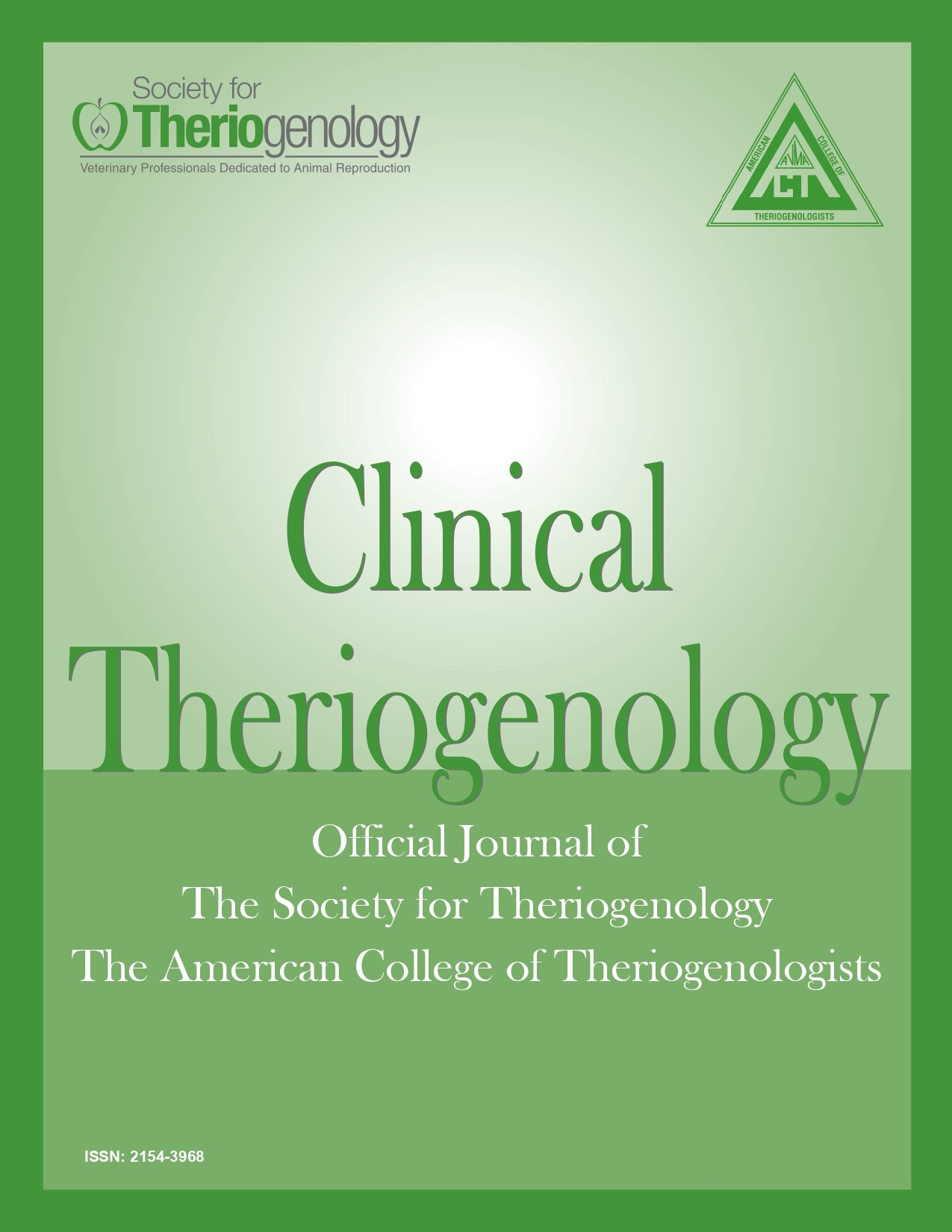Dystocia due to a schistosomus reflexus in a miniature Dachshund
Abstract
Schistosomus reflexus (SR) is a rare type of fetal monstrosity reported primarily in cattle, with a prevalence ranging from 0.01 - 1.3% of bovine dystocias.1 It has also been reported in sheep,1 goats,1 horses,2 donkeys,3 rhinoceroses,4 and sea turtles5 but not in dogs. A 10 year old intact miniature Dachshund was presented with a dystocia following an unplanned mating to her great grandson. Bitch was clinically stable on physical examination. Small loops of fetal bowel protruded from the vulva. Perineal area was cleaned with an antibacterial soap and a digital examination of vestibule and vagina was performed. Digital palpation revealed an abnormal fetus in a ventral transverse presentation. Sterile lubricant was instilled into vestibule and fetus was delivered vaginally with traction. Gross fetal abnormalities included spinal inversion, exposure of abdominal viscera, lung and diaphragm hypoplasia, and limb ankyloses with positioning of the legs adjacent to the skull. Three remaining puppies were born without difficulty or abnormalities. Embryological mechanism by which SR develops is unknown, but it is reasonable to consider that the origin of this ventral wall closure defect occurred as early as after gastrulation. A genetic origin for SR was suggested in transforming growth factor (TGF) ß2 and TGF ß3 knockout mice.6 In addition, the localization of transacting siRNA generating (TAS) genes to the X chromosome suggests that SR may be an X linked disorder.7 Despite a potential genetic origin, SR occurs infrequently and sporadically in domestic animals.
Downloads

This work is licensed under a Creative Commons Attribution-NonCommercial 4.0 International License.
Authors retain copyright of their work, with first publication rights granted to Clinical Theriogenology. Read more about copyright and licensing here.





